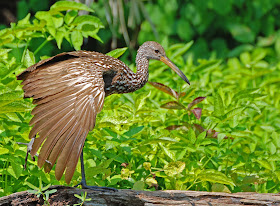The Toco Toucan (Ramphastos toco) is the greatest and ostensibly best known species in the toucan gang. It is discovered in semi-open living spaces all through a great part of centermost and eastern South America. It is a normal magnetism in zoos.
The Toco Toucan has a hitting plumage with a principally dark figure, a white throat, midsection and uppertail-coverts, and red undertail-coverts. What has all the earmarks of being a blue iris is really dainty blue skin around the eye. This blue skin is encompassed by a different ring of uncovered, orange skin. The most observable quality, then again, is its colossal bill, which is yellow-orange, will usually deeper rosy-orange on its easier areas and culmen, and with a dark build and substantial spot with respect to the tip.
Anyway the toucan's bill is functional as a sustaining instrument. The feathered creatures utilize them to arrive at apples and oranges on extensions that are so little there is no option backing their weight, and moreover to skin their pickings. Notwithstanding soil grown foods, Toco toucans consume creepy crawlies and, here and there, green winged creatures, eggs, or reptiles.
Toco Toucan
Toco Toucan
Toco Toucan
Toco Toucan
Toco Toucan
Toco Toucan



















.jpg)

































